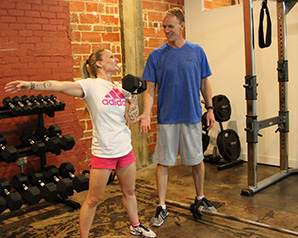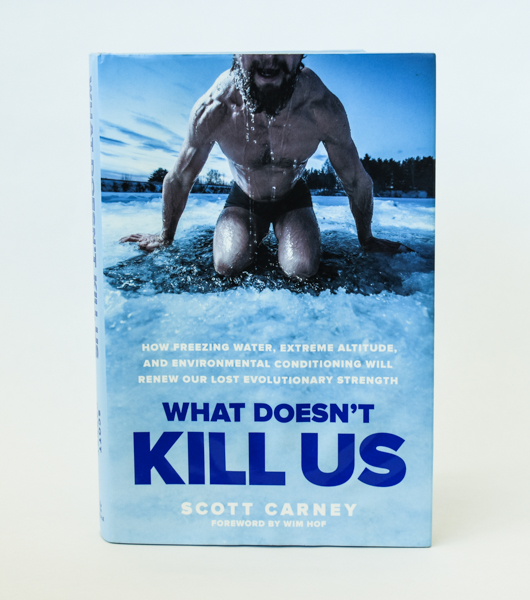
As a personal coach, you'll be on the floor motivating and instructing members. Although the tasks you do may seem repetitive, they can be turned into opportunities for new clients. A personal trainer's day is filled with many opportunities.
Work-life Balance
Personal trainers must find the right balance between their personal lives and work. Personal trainers may wish to plan a time that allows them to spend quality family time. If you work a lot, it is essential to take care. To feel more fulfilled, you need to have a healthy balance of work and home.

For different people, the ideal work/life balance might look different. It is possible to achieve this balance at different stages of your life. As you age, your needs will change. Your work will need to adapt accordingly. You need to organize your work and make the most of technology in order to achieve a balance between your personal life and your professional life.
Physical demands
Personal trainers can have physically strenuous days. Even though most trainers are in great physical condition, it is possible for them to become exhausted and worn out over time. They must constantly perform exercises, teach group workouts, and monitor their own activities and diet. They also need to monitor their clients' progress, keep motivated and maintain a healthy body.
Personal trainers tend to spend most of their day in the gym. They may also work from home. They are usually busier after Christmas and on weekends. They are often required to travel to various locations to meet clients. They may also suffer from certain physical ailments.
There are many career options
If you love helping others and fitness, becoming a personal coach could be the right career path for you. Besides personal training, you can also pursue marketing jobs in the fitness industry, such as fitness modeling, fitness magazine editorship, or fitness apparel design. These jobs require years of experience, and you must have a lot success.

According to the United States Bureau of Labor Statistics (USBOLS), fitness instructors are experiencing rapid growth. This sector is projected to have 39 percent growth by 2030. This is significantly higher than the average rate of growth for all industries. You are now the best time to become a personal trainee.
FAQ
Which Is more important? Exercise, diet, sleep?
The answer depends on what you want to achieve. Weight loss is possible by following a healthy diet. For building muscle mass, exercise is key. Sleep is the last important factor, as it has little to do with how well your day goes.
What are cardio exercises?
Cardiovascular exercises are ones that make your heart and lungs work harder. These include swimming, running, bicycling or rowing. These activities can help you lose weight and speed up your metabolism. These activities can help you keep fit and strengthen your heart.
Do I need to warm up before exercising?
Warming up before an activity can reduce muscle soreness, improve performance, and help to prevent injury. Warming up can take many forms, including walking, running or jumping rope, stretching, or cycling. Start slow and slowly increase your pace.
Why is it important for you to get enough rest?
It is crucial to have a healthy life style. Sleep allows your body to repair itself and recover from daily stresses. Getting adequate sleep each night helps you to function optimally throughout the day.
What are Resistance Training Exercises?
Resistance training is performed with weights and other objects. Lifting weights, for example, can help strengthen your arms and shoulders, chest, backs, legs, core, and core. Resistance training increases muscle mass, bone density, and overall strength.
Can I eat while I'm exercising?
Yes. Yes. Choose low-calorie snacks like watermelon. These foods are high in nutrients, which can improve your performance during training.
Statistics
- One study showed that adults who watch more than 4 hours of television daily had an 80% higher risk of death from cardiovascular disease. (heart.org)
- According to the Centers for Disease Control and Prevention, chronic diseases cause 7 out of 10 deaths in the U.S., and treating chronic diseases accounts for 86% of U.S. healthcare costs. (mana.md)
- In 2018, the World Health Assembly agreed on a global target to reduce physical inactivity by 15% by 2030 and align with the Sustainable Development Goals. (who.int)
- Adolescent girls were less active than adolescent boys, with 85% vs. 78% not meeting WHO recommendations of at least 60 minutes of moderate to vigorous intensity physical activity per day. (who.int)
External Links
How To
How to burn belly fat faster
When trying to lose weight, belly fat is often viewed as a problem. But if you think about it, Belly Fat is actually a good thing. Your organs are protected from being damaged by excess belly fat. Let's find out how to lose belly fat quickly.
Stress and inactivity are two of the major factors that cause us to store body fat. Stress makes us feel hungry constantly because it stimulates the production of the cortisol hormone. Cortisol can increase insulin levels in the blood. The insulin stores the excess calories as fat. A lack of sleep leads to adrenaline being released into the system which causes an increased appetite. These extra calories can be broken down by exercising.
There are many ways to reduce belly fat. Any one of these can be tried, depending on how much you have to spend. These tips will help you quickly get rid of belly fat.
-
You can eat less. You should eat smaller meals throughout the day than you would if you ate three big meals. This will help you consume less calories.
-
Make sure you drink plenty of water. Water flushes out toxins from your body and keeps you hydrated. Water before each meal can help you feel fuller longer and reduce your appetite so that you don't overeat.
-
Avoid unhealthy snacks. If you're looking for quick fixes, snack foods like chips, cookies, candies, etc. These tempting snacks might look appealing. These sugary treats have lots of empty calories so avoid them. Choose healthier alternatives such as whole grains, vegetables, fruits, seeds, nuts and seeds.
-
At least three times per semaine, do strength training. Strength training builds muscle mass which burns more calories even while resting. It strengthens bones muscles ligaments, tendons and the heart.
-
Walking or stretching is a good habit to do regularly. Stretching helps to improve flexibility and mobility, which reduces back pain. Walking can help you burn calories.
-
Reduce alcohol intake. Avoid alcohol.
-
You can lose weight slowly. Your current weight is the first step to losing weight. Then calculate your ideal weight by adding 5% to 10% of your total body weight. Once you have reached your target weight, begin decreasing your daily calories intake by 500-1 000 calories until you reach your goal.
-
Avoid processed foods. These foods are high on sugar, salt, and additives. These processed foods are often convenient, but they lack enough nutrients for good health.
-
Don't skip breakfast! Consuming breakfast increases concentration, memory and energy levels. Protein (like eggs), fiber and complex carbohydrates (like oatmeal) should be included in breakfast.
-
Have regular bowel movements. Bloating and gas can be caused by irregular bowel movements and constipation. To prevent this, drink plenty of water and increase fiber intake.